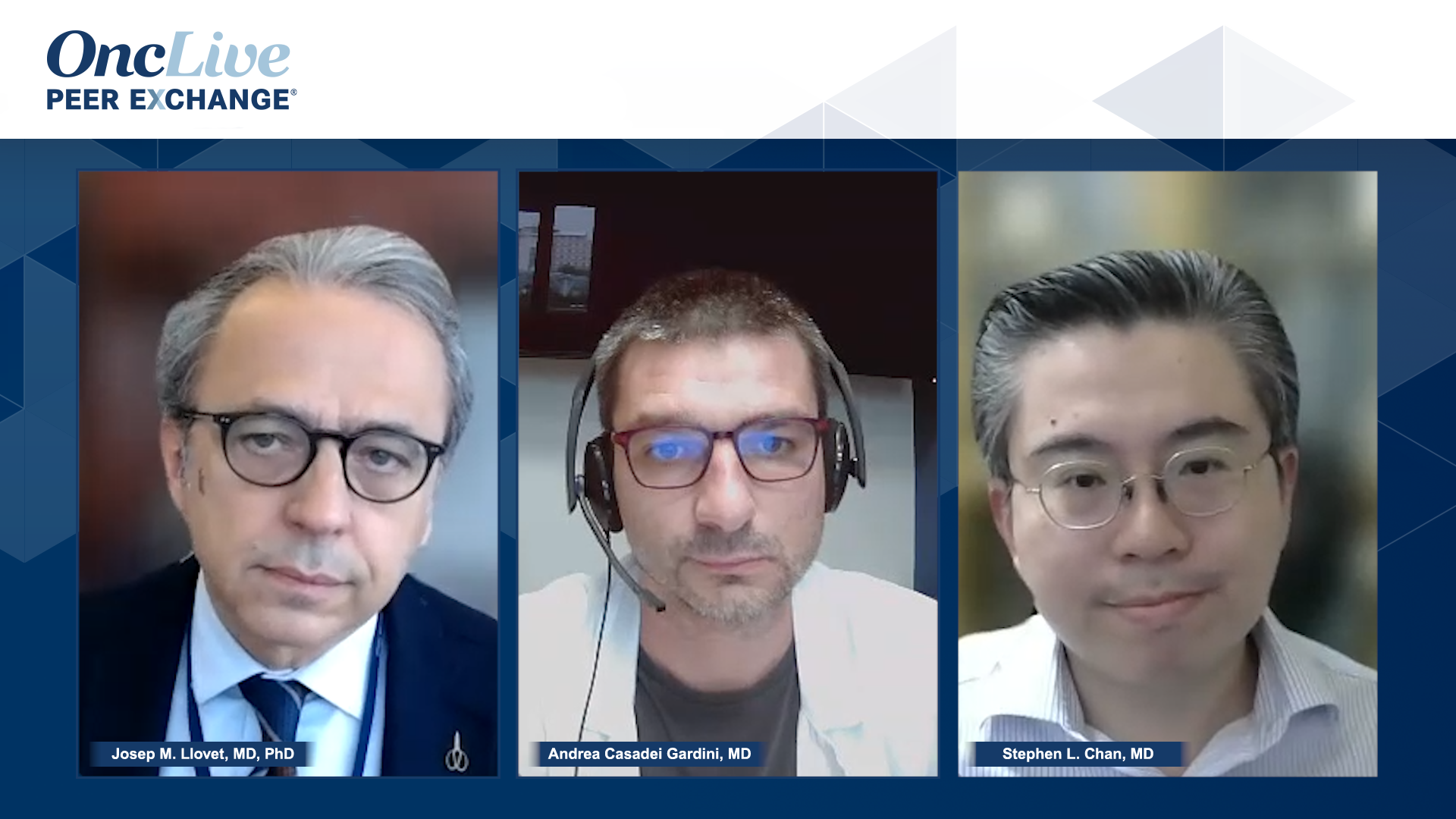- Advertise
- About OncLive
- Editorial Board
- MJH Life Sciences brands
- Contact Us
- Privacy
- Terms & Conditions
- Do Not Sell My Information
2 Clarke Drive
Suite 100
Cranbury, NJ 08512
© 2025 MJH Life Sciences™ and OncLive - Clinical Oncology News, Cancer Expert Insights. All rights reserved.
Is There a Role for Systemic Therapy for Patients With Intermediate HCC?
Gastroenterology experts discuss whether there a is a role for systemic therapy for the management of intermediate HCC.
Josep M. Llovet, MD, PhD:Let’s imagine a scenario where we’re not talking about a single tumor, but this tumor is 7 cm with an additional node—either metastasis or a synchronic tumor because it’s difficult to tell if you don’t run molecular studies—in another segment of 2 cm. We have 2 nodules, 7 cm and 2 cm, surgery is not the ideal strategy, and we are in the intermediate setting. TACE [transarterial chemoembolization] has been a standard of care for the last 15 years, and there are trials testing drug combinations with no positive results. I’m remembering the study by [Masatoshi] Kudo, [MD,] presented with lenvatinib or others in intermediate HCC [hepatocellular carcinoma]. Dr Chan, in which circumstances might you consider these combinations? Or do you treat the patient with the conventional standard of care, and then depending on the progression of the disease, you make a decision?
Stephen L. Chan, MD:We know the BCLC [Barcelona Clinic Liver Cancer] B stage of HCC is a heterogeneous disease. Some patients who a relatively small disease burden, they will benefit from the TACE alone. Patients with larger tumors, like as mentioned larger than 7 cm, or with a tumor number of more than 5, or sometimes we call it up-to-7 criteria, will have a higher chance of developing refractoriness to TACE, even though we can technically treat them with it. In the APPLE [Asia-Pacific Primary Liver Cancer Expert] consensus statement, we call these TACE unsuitable tumors. We don’t have high-level evidence for how to treat this type of patient with a larger disease burden. One proposal, as mentioned by Dr Llovet, is that we can add a TKI [tyrosine kinase inhibitor] to the treatment of these tumors. When you read the data and look at the clinical trials, we have some study on axitinib, and while the response rate is higher, the PFS [progression-free survival] slightly improved, the overall survival [OS] has not dramatically changed. So I don’t think this will be routine.
Now, industries and investigators are testing the addition of PD-1 or PD-1 combinations, like the EMERALD-1 study, and we need to wait for the data from this phase 3 clinical trial. In the study by Kudo, which I’m a part of, we asked if a single systemic therapy can benefit this type of high-burden BCLC stage B disease, like beyond the up-to-7 criteria. We showed that single-agent lenvatinib in this type of TACE unsuitable patients, large disease burden, have a better overall survival and PFS in a matched prospective cohort study. This is not a randomized study, it’s a matched cohort study. Also, those patients treated with lenvatinib had preservation of hepatic function during the course of treatment, while patients treated with TACE have a higher chance of developing deterioration of function in terms of ALBI [albumin-bilirubin] score and Child-Pugh score. This is still an open area, and we need more studies in the future to guide us.
Josep M. Llovet, MD, PhD: I would say that overall, for intermediate HCC, this means liver-only disease without metastasis and good performance status, the standard of care is locoregional therapies, TACE, and even in the United States, Y-90 [yttrium-90 radioembolization] is accepted as an alternative option. Adding systemic therapies is not indicated by guidelines. There are preliminary data that are appealing. There are several ongoing trials, the EMERALD-1 , the LEAP-012, and the CheckMate 74W. These trials are combining locoregional and systemic therapies, but at this point we cannot indicate these treatments in the management of intermediate HCC.
Transcript Edited for Clarity
Related Content:





